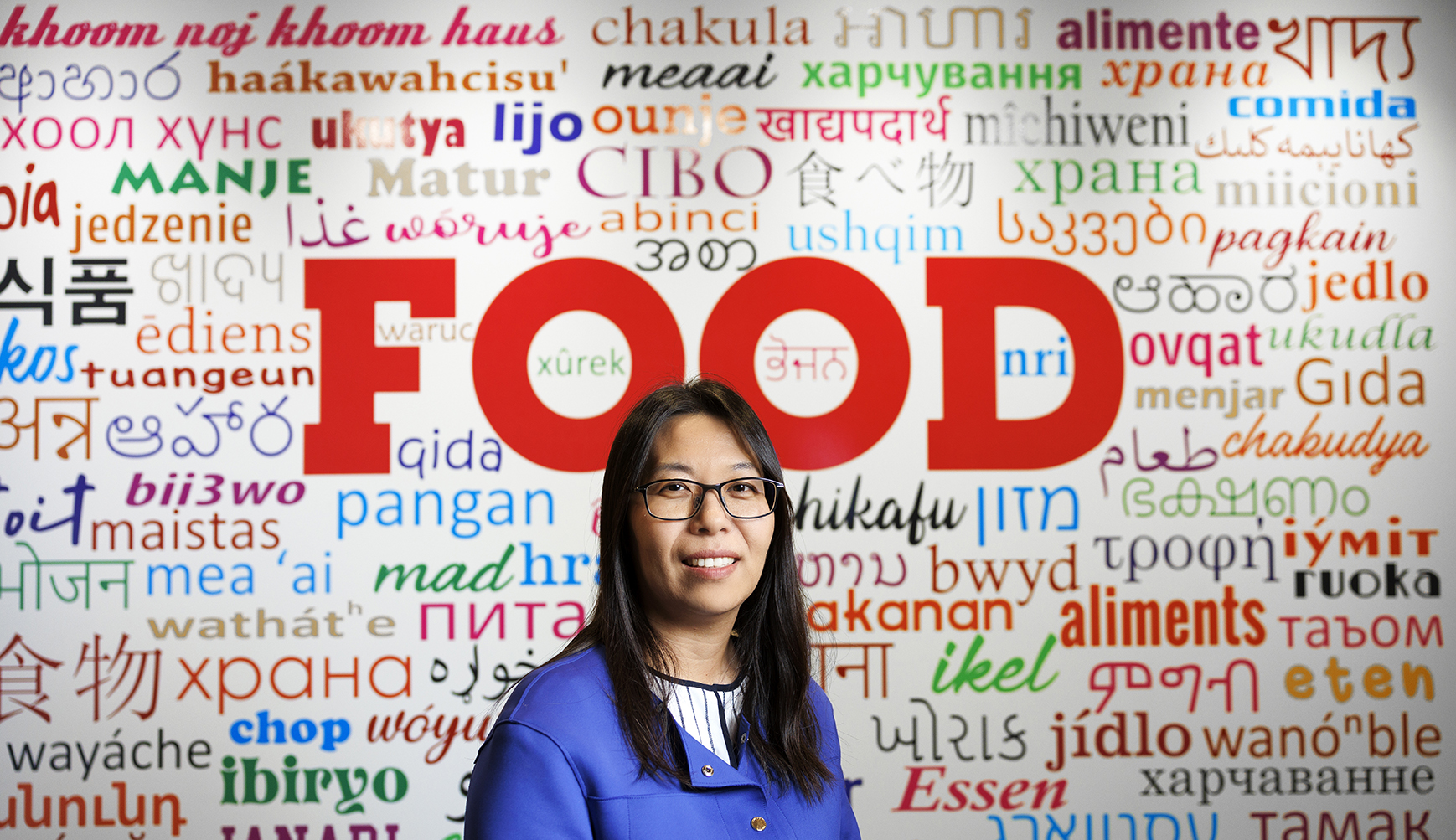
Food contamination can trigger everything from the annoying to the catastrophic — from stomach upset in the mildest cases, to death in the most extreme.
The United States is far safer in this regard than most countries, yet the federal Centers for Disease Control reports that salmonella bacterial contamination each year causes about 1.3 million infections. That sends an estimated 26,500 Americans to the hospital and ultimately takes about 420 lives.
Husker scientist Bing Wang, a globally recognized expert in food risk assessment, is spearheading cutting-edge science to contain these and other food safety risks in the U.S. and worldwide. Her lab at the University of Nebraska–Lincoln uses advanced methods of computational analysis that strengthen protections in multiple ways.
Agricultural producers and the food processing industry benefit because the methods used by Wang, associate professor of food science and technology, enable detailed food-risk analysis of each stage of field management and food processing. Agencies in the U.S. and internationally draw on her scientific insights to better understand food risk possibilities and enact more effective protections.
The analytical methods her lab employs have broad, practical utility — from Chilean farmers who learned the source of E. coli bacterial contamination of their raspberry production thanks to Wang’s analysis, to soy sauce company Kikkoman, which improved its food storage procedures as a result of her work.
A current study requested by the Chilean government is analyzing the safety of reusing graywater — wastewater from baths, sinks, washing machines and other appliances — for crop irrigation. The findings by Wang’s lab could have broad utility worldwide.
“Bing’s risk assessment and analysis work, both nationally and internationally, aim to benefit consumer health and wellness in Nebraska, the U.S. and the world,” said Curt Weller, professor and head of the Department of Food Science and Technology at Nebraska. “That, in turn, will lead to a higher level of sustainability and greater mitigation of risk for the global food system.”
Wang has contributed to key studies in this area of microbial safety and serves as an expert adviser to the United Nations’ Food and Agriculture Organization and to the World Health Organization. This year, she attended two international conferences as an expert contributor, providing scientific advice to the Codex Alimentarius Commission, which establishes international food standards for consumer health and fair global food trade.
In the U.S., the most common bacterial cause of diarrheal illness is Campylobacter bacteria. Campylobacter infection affects an estimated 1.5 million U.S. residents each year, according to the CDC. An academic paper Wang coauthored with Husker colleagues helps the private sector and government regulators bolster consumer protection against this food threat.
Wang’s lab used advanced analytical methods to carry out a thorough study of broiler chicken processing, then identified the most effective production actions the industry can adopt to reduce bacterial contamination.
The study used cutting-edge analytical methods that Wang’s lab is in the forefront of using:
Quantitative microbial risk assessment. This systems approach analyzes food production and processing practices to assess their likelihood of foodborne contamination. This method takes into account factors including food pathogen contamination, pathogen growth factors and the effectiveness of specific food safety interventions.
Predictive microbiology modeling. This quantitative tool is used to predict the behavior of microorganisms in response to food attributes and production/processing conditions.
Systematic review and meta-analysis. This is a comprehensive review of all available research on a particular food risk topic, combining the results of multiple studies to produce a more precise and reliable estimate of food risk.
Wang used similar analytical rigor in a wide-ranging study of field management and processing practices for the raspberry sector in Chile. Her study, done at the request of the Chilean government, determined that the main source of E. coli bacterial contamination of the country’s raspberries was the water used for pesticide dilution.
“Since we identified that the water is the most important factor affecting the quality of fresh and frozen raspberries,” Wang said, “we continued to evaluate what type of water treatment can be used by small farmers, because 80% of the families for raspberry production are small farmers. We needed to identify an approach that is feasible and affordable for producers.”
Two staff members with the Chilean Agency for Food Safety and Quality studied in Wang’s lab and earned master’s degrees in food science, then returned to Chile to work as analysts for the agency. Wang continues to collaborate with the Chilean agency, this time through a study evaluating whether graywater can be safely reused for crop irrigation.
Wang has applied a similar analytical approach in partnership with soy sauce maker Kikkoman. Because heat treatment can’t be used to eliminate possible microbial contamination in some soy sauce products, Wang said, “you need to hold it long enough to make sure the acidity can kill the pathogen before the product is released into the market.”
Predictive modeling by Wang’s lab helped determine the appropriate holding time. Overall, such predictive methodology has broad use for private industry regarding new product development and food safety.
A general challenge in food safety work is the need for scientists to convert their complex research approach into simpler, user-friendly assessment tools that food risk managers can use. In the partnership with Kikkoman, Wang’s lab set a positive example by creating a web-based tool for the company.
Wang currently serves on the U.S. National Advisory Committee on Microbiological Criteria for Foods to provide independent scientific support for federal regulators. Although food risks are lower in the U.S. than in most of the world, she said, “there are still ongoing issues to be addressed, and the government is paying great attention.”
Her lab is among the U.S. institutions making leading contributions to that effort.








